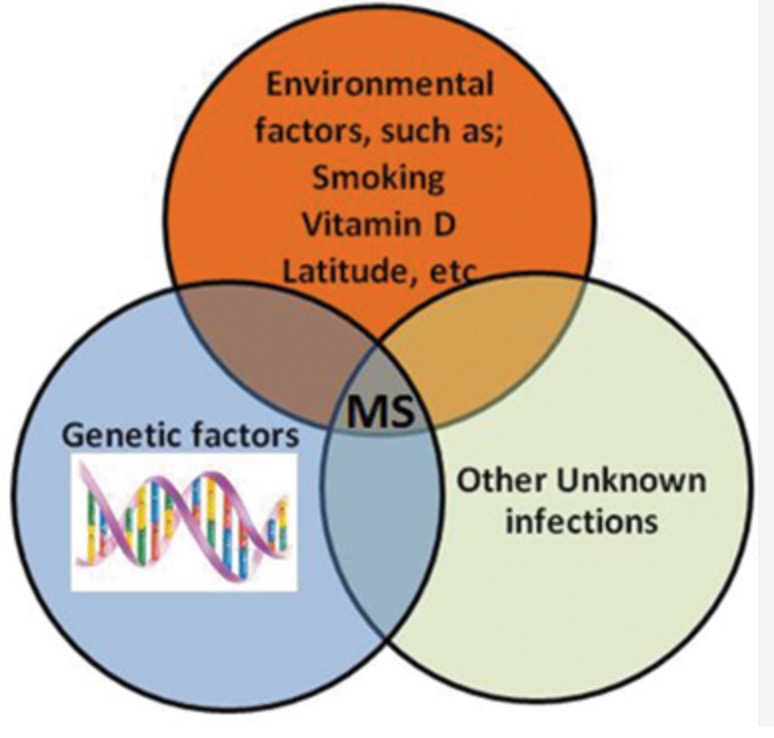Multiple Sclerosis (MS) is the second greatest cause of disability in early and middle adulthood. Although the exact cause of Multiple Sclerosis is still being hotly investigated, there are clear risk factors for MS. While people who do not have risk factors can develop MS, noting identifiable risk factors may prompt clinicians to look for the condition earlier. If patients can identify potential risk factors when experiencing unexplained neurologic symptoms, they may be able to help establish a diagnosis sooner, which may ultimately lead to lower disability down the road. Further, some of the risk factors may be modifiable.
Geographic Factors
The distribution of MS cases varies worldwide, with the highest incidence in the Northern Isles of Scotland and Shetland Islands. In the US, approximately 1 in a 1000 people will develop MS and the prevalence is higher in Caucasians than in people with different ancestries. The disease is rarely seen in Japan and in Africa. Much of this demographic correlation is decades old and over the years, the variation of rates by regions is lessening.
More than one study has shown that the geographic risk is determined by the age of 15, so that moving from a higher to a lower-incidence area or from a lower to a higher-incidence area will not change the risk associated with their childhood country. The geographic predisposition to developing MS correlates with latitude.
Genetics (Family History)
Family history of MS is another risk factor. If you have no family history of MS, the risk of developing MS is 0.1%. The risk increases to as much as 4 percent if you have a sibling with MS. If you have a fraternal twin with MS, your risk increases to 5%, and if you have an identical twin with MS, your risk jumps to 30%.
The genetic predisposition to developing MS is related to the several hundred genes associated with MS. All the genes relate to the immune system and not to the nervous system.
Vitamin D deficiency
People with lower levels of Vitamin D are at increased risk of developing MS. Further, people whose mother’s Vitamin D levels were low during their pregnancy had increased risk of developing MS.
Prior infection with Epstein-Barr Virus (EBV)
There is a strong association of MS with previous Epstein-Barr Virus (EBV) infection. If your bloodwork shows no evidence of previous EBV infection, your chance of developing MS is close to zero. Essentially 100% of the MS population has evidence for prior EBV infection. That is a less striking fact when you consider that approximately 90% of the general adult population has been infected with EBV virus. Recent studies suggest that the small but definite increased risk caused by prior EBV infection are due to a specific activation of the immune system.
Obesity and smoking
There is a less striking association of increased obesity and smoking to the development of MS. Smoking, which is known to increase inflammatory markers, may also be associated with an earlier MS onset and worse long-term disability.
How BeCareLink can help
BeCare Neuro Link can screen for neurologic dysfunction. By informing patients and their clinicians of the abnormalities on the neurologic exam and details on limiting symptoms, BeCare Neuro Link can help facilitate an earlier diagnosis being made by clinicians and BeCare MS Link can help in monitoring disease progression and treatment responses once a diagnosis of MS is made.
Reference: Joseph R. Berger. Risk Factors of MS – Medscape – May 09, 2022.
